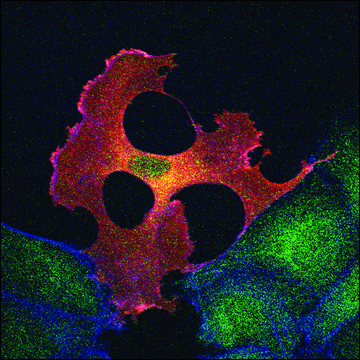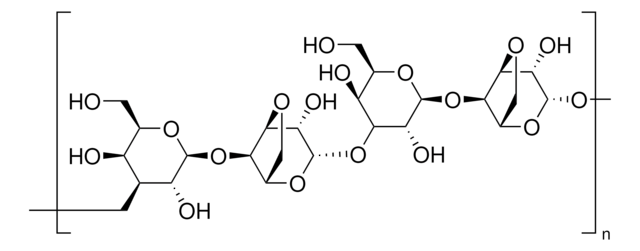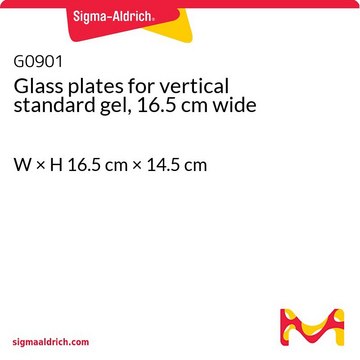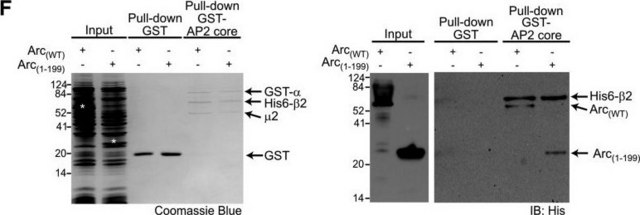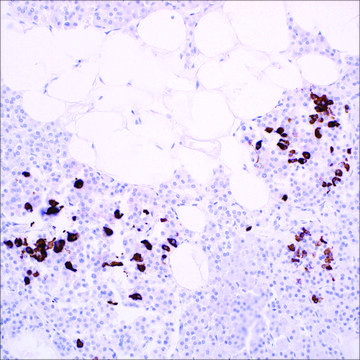G9665
Anti-Glutamate Receptor 1A, Metabotropic (mGluR1A) antibody produced in rabbit
affinity isolated antibody, buffered aqueous glycerol solution
Sign Into View Organizational & Contract Pricing
All Photos(1)
About This Item
Recommended Products
biological source
rabbit
Quality Level
conjugate
unconjugated
antibody form
affinity isolated antibody
antibody product type
primary antibodies
clone
polyclonal
form
buffered aqueous glycerol solution
species reactivity
mouse, feline, rat
technique(s)
immunohistochemistry (frozen sections): 1:500
western blot: 1:1,000
UniProt accession no.
shipped in
dry ice
storage temp.
−20°C
target post-translational modification
unmodified
Gene Information
mouse ... Grm1(14816)
rat ... Grm1(24414)
Related Categories
General description
The metabotropic glutamate receptors consist of eight subtypes (mGluR1-8) divided into three groups (I-III). Glutamate is the main excitatory neurotransmitter in the brain. It acts on ligand-gated receptor channels, termed NMDA, AMPA and kainate receptors, involved in the fast excitatory synaptic transmission. Glutamate also regulates ion channels and enzymes producing second messengers via specific receptors coupled to G-proteins, called metabotropic glutamate receptors.
Specificity
This antibody does not react with other splice variants or mGluR5.
Immunogen
synthetic peptide corresponding to the sequence of amino acids 1116-1130 of rat metabotropic glutamate receptor 1A (mGluR1a).
Application
Anti-Glutamate Receptor 1A, Metabotropic (mGluR1A) antibody produced in rabbit is suitable for use as a primary antibody at a working dilution of 1:1500 using extracts from mouse brain It is suitable for immunohistochemistry at a working dilution of 1:500 and for immunoblotting at a working dilution of 1:1000.
Biochem/physiol Actions
Glutamate Receptor 1 is a G-protein coupled receptor for glutamate. The role of the metabotropic receptors in pain and pathology is being studied for therapeutic potential. Glutamate receptors are important mediators of excitatory amino acid neurotransmission. The α isomer of this receptor is a disulfide-linked homodimer and its activity is mediated by a G-protein-coupled phosphatidylinositol-calcium second messenger system. Mutations in this gene causes autosomal-recessive congenital cerebellar ataxia.
Physical form
10 mM HEPES (pH 7.5), 150 mM NaCl, 100 μg/mL BSA and 50% glycerol
Disclaimer
Unless otherwise stated in our catalog or other company documentation accompanying the product(s), our products are intended for research use only and are not to be used for any other purpose, which includes but is not limited to, unauthorized commercial uses, in vitro diagnostic uses, ex vivo or in vivo therapeutic uses or any type of consumption or application to humans or animals.
Not finding the right product?
Try our Product Selector Tool.
Storage Class Code
10 - Combustible liquids
WGK
WGK 1
Flash Point(F)
Not applicable
Flash Point(C)
Not applicable
Choose from one of the most recent versions:
Already Own This Product?
Find documentation for the products that you have recently purchased in the Document Library.
Our team of scientists has experience in all areas of research including Life Science, Material Science, Chemical Synthesis, Chromatography, Analytical and many others.
Contact Technical Service
